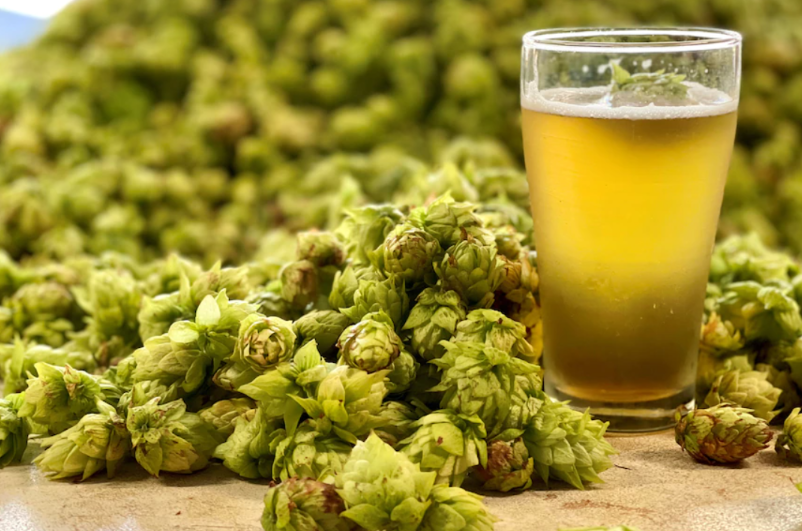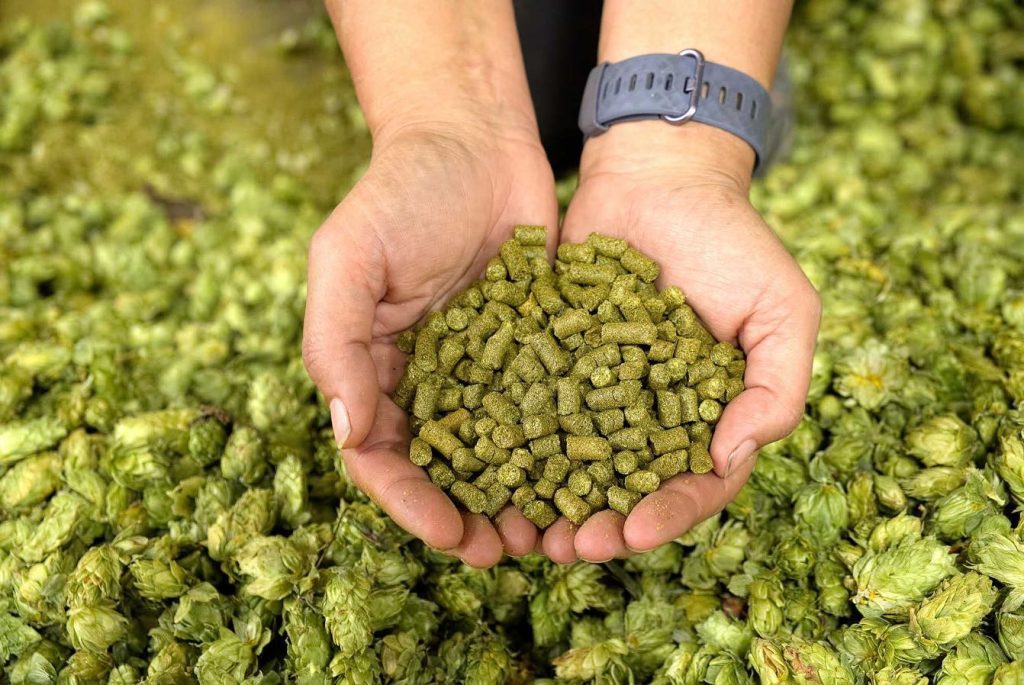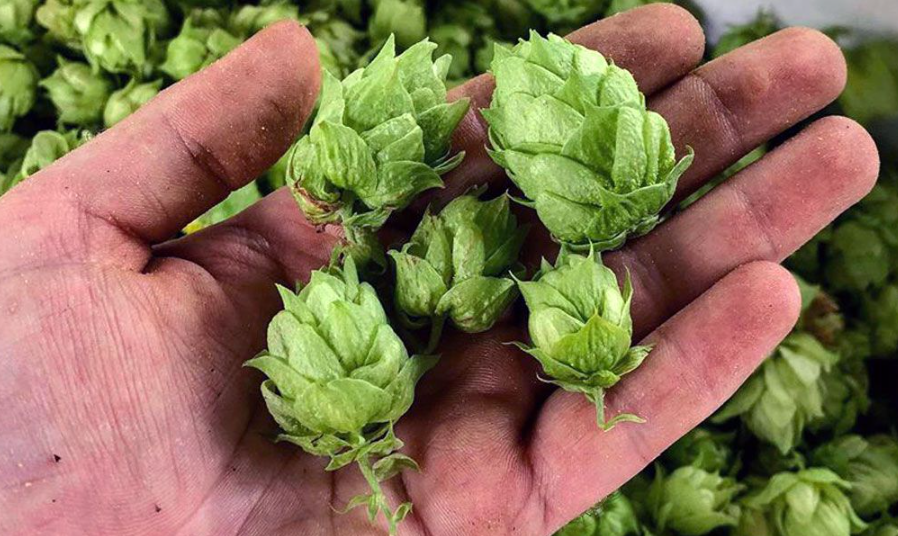Brewing Hops: The Greatest Reason Behind Drinking Beer
Malt, water, yeast, and hops are the four beer fundamentals. And while many people love drinking hoppy beers, most of them may not understand what precisely a hop is.
What Are Hops?

The flowers or cones of the Humulus lupulus plant are called hops. Brewing hops help keep beer fresher for longer and retain its head of foam, a critical component of its hoppy aroma, flavour, and bitterness. Hops are present in every beer on the market today. If they didn’t, they’d be a “gruit,” a beer made with witches’ brew-sounding herbs like bog myrtle, yarrow, heather, or juniper instead of hops. Although nature gives us hops in only one form, growers and processors deliver brewing hops in a variety of forms.
Forms of Hops

Pellet Hops
Pellet hops are rabbit pellet-like products commonly used for homebrewing. Pellets are created by shredding and extruding dried whole hops through a die. No additional binding agents are required because the hops resins’ stickiness naturally holds the pellets together. Pellets are preferred for dry hopping and hopback because they take up a fraction of the space required for an equivalent amount of whole leaf hops in storage. However, because pellets disintegrate in the kettle and fermentor, whole hops are frequently preferred for dry hopping and hopback.
T-90 pellets are the most popular among hobbyists and can be purchased by the pound, 454 g, or in 1- or 2-ounce, 28- or 57-g packages. T-45 pellets are also available. Much of the vegetal material has been removed from T-45 pellets, resulting in a more concentrated product. The figures simply indicate what percentage of the material of the dried hop makes it into the pellet. T-90 pellets are made from 100 kilogrammes of whole leaf hops, while T-45 pellets are made from 45 kilogrammes of whole leaf hops.
For instance, If a homebrew recipe calls for 2 ounces, 57 g, of whole leaf Cascade, you could use 1.8 ounces, 51 g, of T-90 Cascade pellets, 90 per cent of 2 ounces, or 0.9 ounces, 26 g, of T-45 pellets, 45 per cent of 2 ounces, assuming the alpha-acid percentage remains the same.
Whole Leaf Hops
The least processed form of hops is whole leaf hops, which are the dried cones of the hops plant. Growers harvest the cones from the bines, which resemble vines, dry them in an oast house, and press them into bales, half bales, or quarter bales. A hops bale weighs 200 pounds, 90.7 kg, but homebrewers can buy whole hops by the pound or in convenient 1- or 2-ounce bags.
Wet Hops
Due to their perishability, wet hops are only available during the autumn hops harvest and must be used immediately. These are sold loosely packed and have an approximate moisture content of 80%; dried hops are less than 10 per cent. To retain the unique character of very fresh hops, wet hops are most commonly used as a finishing touch, either in a hopback or for dry hopping. Wet hops are now available in season at a few homebrew shops, but if you live near a hops farm, it’s well worth the trip to get the freshest wet hops possible.
Hops Extracts
Hops extracts are more common in commercial breweries than in-home ones, but retailers are increasingly making them available to home brewers. Because extracts are standardised to a known percentage of alpha acids, they allow for very precise bitterness dosing. Extracts are popular for high-gravity styles that require significant bitterness to balance a large malt bill because they deliver IBUs without introducing vegetal material into the kettle.
Hops Plugs
Hops plugs aren’t as common as they used to be. Plugs are, in essence, tiny hops bales weighing only an ounce or two, 28 to 57 g, that are the right size and shape to fit through a firkin’s bunghole. As a result, they’re frequently used to dry real hop ale.
Hops and Their Incredible Health Benefits

Improves Sleep
Being known for its calming properties, hops may be able to help if you have trouble sleeping or have a messed-up schedule that disrupts your circadian rhythm, also known as your sleep-wake cycle. When compared to a control group who did not drink the brew, female nurses who worked rotating shifts could fall asleep faster and sleep better after having non-alcoholic beer for dinner in their off-hours.
Promotes Better Mood
Hops can also help to lift your spirits. A recent study found that daily supplementation of a hops dry extract for four weeks improved mild depression, anxiety, and stress in otherwise healthy young adults.
Helps with Hot Flashes
Hops may help with hot flashes and other menopause symptoms. 8-prenylnaringenin, a flavonoid found in hops, is a phytoestrogen, a plant-based compound that can mimic oestrogen in the body.
Promotes Immune Health
Hops compounds may prevent some disease processes, including those associated with metabolic syndrome. Hops contain a flavonoid compound called xanthohumol, which is thought to have antiviral, anti-clotting, anti-inflammatory, and even anti-tumour properties.
Possible Side Effects
Hops are generally thought to be safe. However, some people are allergic to hops, so keep an eye out for a runny or stuffy nose, hives, or itching after handling the flower. Brewing hops could be to blame if you’ve avoided beer in the past for this reason. If you’re trying a supplement for the first time, stick to the directions on the bottle and start with a small dose before increasing if desired. Taken in moderation, hops can cause minor stomach discomfort. On the other hand, they have been known to aid in the treatment of gastrointestinal problems. Because hops contain a phytoestrogen, anyone with a history of oestrogen receptor-positive breast cancer should avoid taking it as a supplement.
